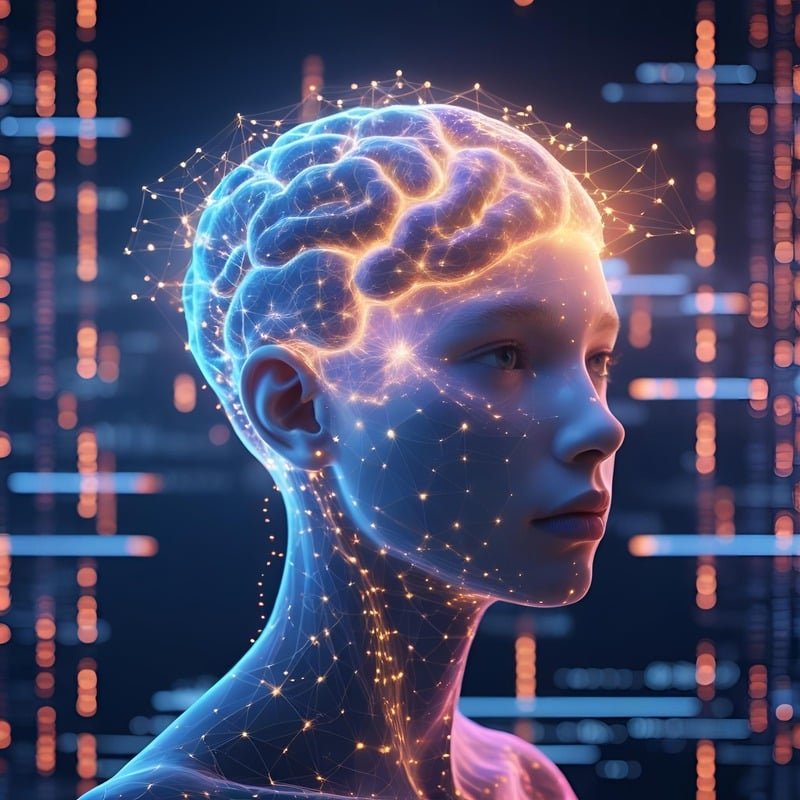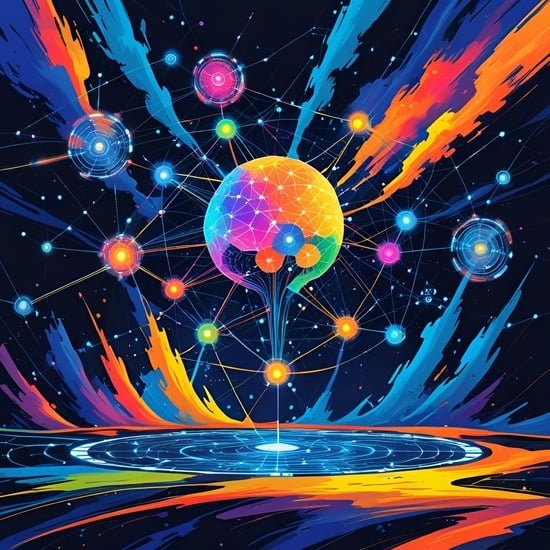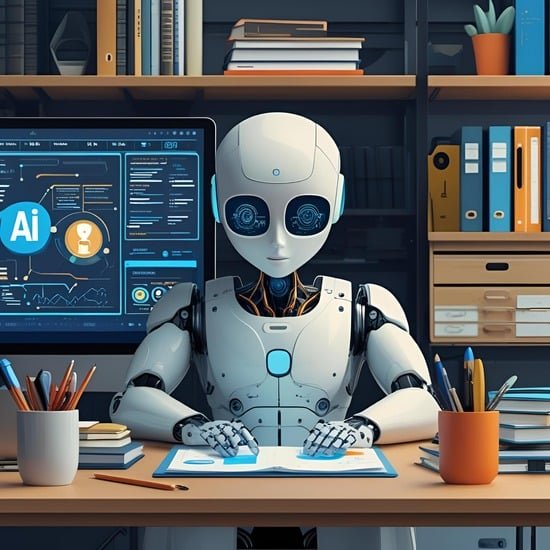Introduction to Machine Learning
The phrase machine learning might sound like something out of a science fiction movie, but the reality is much simpler—and far more powerful. At its core, machine learning (ML) is about teaching computers to learn from data and make decisions without being explicitly programmed.
Think about it: when you unlock your smartphone with face recognition, stream music from Spotify, or receive product recommendations on Amazon, you’re witnessing machine learning in action. These systems don’t rely on rigid rules. Instead, they improve over time by analyzing patterns in your behavior and adjusting their responses accordingly.
So, why should you care about machine learning? Because it’s no longer just a “tech buzzword.” ML is reshaping industries from healthcare to finance, education to entertainment. And whether you realize it or not, you already interact with machine learning multiple times a day.
This beginner’s guide will break down machine learning into simple, easy-to-understand parts. We’ll cover what it is, how it works, its key concepts, real-life applications, and how you can start your journey into this exciting field. By the end, you’ll understand why machine learning is considered one of the most important technologies of our time.

What is Machine Learning?
Machine learning is a branch of artificial intelligence (AI) that allows computers to learn and improve from experience without being manually programmed for every task. Instead of following a strict set of instructions, machine learning models use algorithms to analyze data, identify patterns, and make predictions or decisions.
Imagine teaching a child to recognize cats. Instead of giving them a rulebook that describes every possible feature of a cat (whiskers, tail, fur, ears, etc.), you show them hundreds of pictures of cats and dogs. Over time, the child learns to identify a cat just by recognizing patterns in the images. Machine learning works in the same way—it “learns” from data instead of relying on step-by-step instructions.
In simpler terms:
- Traditional programming: Humans write explicit rules for the computer.
- Machine learning: Computers create rules on their own by analyzing data.
For example:
- Email spam filters learn to recognize junk mail by analyzing billions of spam emails.
- Netflix learns your movie preferences by studying what you watch and how you rate content.
- Banks use ML to detect fraudulent transactions by spotting unusual spending patterns.
Machine learning is essentially about making computers smart enough to adapt.
Why Machine Learning Matters Today
Machine learning is not just a cool feature—it’s a driving force of modern innovation. Here’s why it’s so important today:

1. It Saves Time and Resources
Businesses no longer need to manually analyze massive amounts of data. ML algorithms can process and interpret data at lightning speed, saving both time and human effort.
2. It Improves Accuracy
From medical diagnoses to weather forecasting, machine learning models often outperform humans in accuracy, especially when dealing with large datasets.
3. It Powers Everyday Technology
Think about smart assistants like Siri and Alexa, predictive text on your phone, or Google Maps suggesting the fastest route—machine learning is behind all of it.
4. It Drives Innovation Across Industries
- Healthcare: AI helps doctors detect diseases earlier.
- Finance: Algorithms manage investments and detect fraud.
- Retail: Personalized shopping recommendations increase sales.
- Education: Adaptive learning platforms personalize student experiences.
In short, machine learning is not just a trend—it’s becoming a necessity in our digital-first world. Companies that fail to adopt ML risk falling behind.
The Basics of Machine Learning
Now that we understand what machine learning is and why it matters, let’s dig into the basics of how it works.

How Machine Learning Works
Machine learning is based on the concept of training a model with data. Here’s the step-by-step process:
- Collect Data – Gather data relevant to the problem (e.g., images of cats and dogs).
- Prepare Data – Clean and organize the data (remove errors, fill gaps, format properly).
- Choose an Algorithm – Pick a learning method (like decision trees, neural networks, or regression models).
- Train the Model – Feed the data into the algorithm so it can “learn.”
- Test the Model – Give the model new, unseen data to see how well it performs.
- Improve and Update – Adjust and retrain to make it more accurate.
Think of it like training for a sport: the more practice you get, the better you perform. Similarly, the more data you feed a machine learning model, the smarter it becomes.
Types of Machine Learning
There are three main types of machine learning, and understanding them is key for beginners:
- Supervised Learning
- The model is trained on labeled data (data that already has answers).
- Example: Training a model with “cat” and “dog” labeled photos so it can classify new images.
- Unsupervised Learning
- The model analyzes data without labels, finding hidden patterns or groupings.
- Example: Grouping customers into segments based on shopping behavior.
- Reinforcement Learning
- The model learns through trial and error, receiving rewards or penalties for actions.
- Example: Teaching a robot to walk by rewarding it when it makes progress.
Each type serves a different purpose, and together, they form the backbone of most AI applications we see today.
Key Concepts and Terminology
Before diving deeper, it’s important to understand some basic machine learning terms.

Algorithms
An algorithm is a set of rules or instructions that a machine follows to solve a problem. In ML, algorithms are used to find patterns in data.
Models
A model is the output of a machine learning algorithm after being trained on data. Think of it as the “knowledge” the machine has gained.
Training Data
This is the dataset used to teach the model. For example, thousands of medical images used to train an AI system to detect cancer.
Features and Labels
- Features are input variables (like age, weight, or color of an object).
- Labels are the desired output (like “dog” or “not dog”).
Prediction
After training, the model makes predictions on new data. For example, predicting whether an email is spam or not.
By understanding these key terms, beginners can start making sense of how machine learning systems are built and applied.
Real-Life Applications of Machine Learning
Machine learning is not limited to tech companies—it’s everywhere. Let’s look at some real-world examples:

Everyday Examples in Technology
- Voice Assistants: Siri, Alexa, and Google Assistant learn your speech patterns and preferences.
- Social Media: Facebook and Instagram use ML to suggest friends and recommend content.
- Streaming Services: Netflix and Spotify recommend shows or songs based on your past behavior.
- Search Engines: Google uses ML to refine search results and answer questions more accurately.
Machine Learning in Business and Healthcare
- Business: Companies use ML for customer support chatbots, targeted advertising, and demand forecasting.
- Healthcare: ML assists in detecting cancer from scans, predicting patient risks, and designing personalized treatments.
- Finance: Banks use ML to detect fraudulent activity and automate loan approvals.
- Education: Platforms like Duolingo use ML to personalize lessons and adapt to a learner’s progress.
In short, machine learning is woven into the very fabric of modern life. Whether you’re shopping online, using GPS, or scrolling through TikTok, ML is working quietly in the background to enhance your experience.
Tools and Frameworks for Beginners
If you’re excited about learning machine learning but unsure where to start, the good news is that there are plenty of beginner-friendly tools and frameworks designed to help you practice and experiment—even if you’re new to programming.
Popular Machine Learning Tools
- TensorFlow
- Developed by Google, TensorFlow is one of the most widely used ML libraries.
- It’s great for deep learning projects like image recognition and natural language processing.
- While powerful, it can be complex for absolute beginners—but tutorials and documentation make it easier.
- Scikit-learn
- Perfect for beginners.
- Provides simple tools for classification, regression, and clustering.
- Great for small-scale projects and quick prototyping.
- PyTorch
- Developed by Facebook’s AI Research lab.
- Known for flexibility and simplicity in building neural networks.
- A favorite among researchers but also beginner-friendly thanks to intuitive design.
Beginner-Friendly Platforms
- Google Colab
- A free, cloud-based notebook environment.
- Lets you write and run Python code in your browser without setup.
- Comes with free access to GPUs, which makes running ML models faster.
- Kaggle
- Known as the “playground” for data science.
- Offers free datasets, competitions, and community discussions.
- You can learn by doing, exploring public notebooks created by other learners.
- RapidMiner & Orange
- Visual drag-and-drop platforms that let you build ML models without heavy coding.
- Perfect for those who want to understand concepts before diving into programming.
By combining these tools with your learning journey, you can start experimenting right away without feeling overwhelmed.
Skills You Need to Start Machine Learning
Machine learning may sound intimidating, but you don’t need to be a rocket scientist to get started. Instead, focus on developing a balanced set of skills.

Programming Languages
The most popular programming languages for ML are:
- Python – The king of machine learning. It’s simple, versatile, and has tons of ML libraries like TensorFlow, Scikit-learn, and Keras. If you’re a beginner, start here.
- R – Great for statistical modeling and data analysis. Used by researchers and statisticians.
- Julia – Known for high-performance computing, especially in data-heavy projects.
👉 If you’re completely new to coding, Python is the best entry point because of its simplicity and massive community support.
Math and Statistics Basics
Machine learning relies heavily on mathematics, but don’t let that scare you. You don’t need to master advanced calculus to begin—you just need a solid grasp of the basics:
- Linear Algebra – For understanding how data is represented in matrices.
- Probability & Statistics – For making predictions and evaluating models.
- Calculus – Helpful for understanding optimization and how algorithms “learn.”
Think of these skills as the foundation that allows you to understand what’s happening under the hood of ML algorithms.
Soft Skills
Don’t underestimate the human side of machine learning:
- Problem-Solving – The ability to frame problems and find practical solutions.
- Critical Thinking – Interpreting data and understanding limitations.
- Curiosity – A willingness to experiment and learn continuously.
With the right balance of coding, math, and problem-solving skills, anyone can step into the world of machine learning.
How to Start Learning Machine Learning
Starting your ML journey doesn’t mean you need to enroll in a Ph.D. program. Thanks to online resources, you can begin learning from home at your own pace.

Step 1: Learn the Basics of Python
Since Python is the most widely used language in ML, start with basic coding tutorials. Websites like Codecademy or freeCodeCamp are excellent starting points.
Step 2: Take Online Courses
- Coursera – “Machine Learning” by Andrew Ng (a classic for beginners).
- edX – Offers university-level courses in data science and ML.
- Udemy – Affordable, beginner-friendly courses with hands-on projects.
Step 3: Practice with Datasets
Theory is important, but practice is where you truly learn. Start with free datasets on Kaggle or UCI Machine Learning Repository. Even simple projects like predicting house prices or analyzing sentiment in tweets can teach you a lot.
Step 4: Build Projects
Try hands-on projects like:
- Spam email classifier
- Movie recommendation system
- Handwritten digit recognizer
- Chatbot using natural language processing
Step 5: Join the Community
Participate in forums like Stack Overflow, join ML communities on Reddit, or compete in Kaggle competitions. You’ll learn faster by collaborating and asking questions.
The key is consistency—don’t rush. Treat ML like learning a new language: small, daily practice will lead to big improvements over time.
Future of Machine Learning
Machine learning is not just a present-day technology—it’s shaping the future of work, communication, and innovation.

Emerging Trends
- AI-Powered Healthcare
- ML will continue to revolutionize healthcare by enabling early detection of diseases, personalized treatments, and faster drug discovery.
- Self-Driving Cars
- Autonomous vehicles rely heavily on ML to navigate safely. By 2030, driverless taxis could become mainstream.
- Natural Language Processing (NLP)
- ML is improving how machines understand human language. Think smarter chatbots, real-time translation, and advanced voice assistants.
- Generative AI
- Tools like ChatGPT and DALL·E show how ML can generate text, images, and even music. Expect more creative applications in the coming years.
- AI in Cybersecurity
- Machine learning will play a major role in detecting cyber threats and preventing digital attacks.
Career Opportunities in Machine Learning
With demand skyrocketing, ML skills open doors to a wide range of high-paying careers:
- Machine Learning Engineer – Builds and deploys ML models.
- Data Scientist – Analyzes and interprets complex datasets.
- AI Researcher – Works on developing new algorithms and technologies.
- Business Analyst (AI Focused) – Uses ML insights to drive business strategies.
According to LinkedIn’s Emerging Jobs Report, AI and ML roles are among the fastest-growing professions worldwide.
The future is clear: machine learning is not a passing trend—it’s becoming a cornerstone of modern society.
Conclusion
Machine learning may sound like a complex buzzword reserved for tech giants and researchers, but in reality, it’s something that touches all of our lives every single day. From unlocking your phone with face recognition to getting personalized Netflix recommendations, ML quietly powers the tools and services we rely on.
In this beginner’s guide, we’ve broken down machine learning into easy-to-understand sections:
- What machine learning is and how it works.
- Why it matters today in industries like healthcare, finance, education, and entertainment.
- The different types of machine learning—supervised, unsupervised, and reinforcement learning.
- Key concepts and terminology such as algorithms, models, training data, features, and predictions.
- Real-life applications that make ML part of everyday life.
- Tools, frameworks, and beginner-friendly platforms to start practicing ML.
- Essential skills—coding, math, and problem-solving—to succeed in this field.
- How to begin learning through online courses, datasets, and projects.
- The future of ML and how it is shaping jobs and industries.
What’s important to remember is that machine learning isn’t just for experts. Thanks to resources like Google Colab, Kaggle, and beginner courses, anyone curious and consistent can start exploring ML. It’s not about becoming an overnight expert—it’s about taking small, steady steps into one of the most exciting technologies of our time.
The future of machine learning is only getting brighter. With new applications emerging daily, from healthcare breakthroughs to AI-powered personal assistants, the opportunities are endless. Whether you want to pursue a career in ML or simply understand how it impacts your world, starting today will give you an edge in tomorrow’s AI-driven society.
So, if you’re asking yourself, “Should I start learning machine learning?” the answer is simple: yes, and now is the best time.
FAQs About Machine Learning
What’s the difference between AI and Machine Learning?
Artificial Intelligence (AI) is the broad field of creating smart machines that can simulate human intelligence. Machine Learning (ML) is a subset of AI that focuses on teaching machines to learn from data and improve without explicit programming. In short: all ML is AI, but not all AI is ML.
Can I learn machine learning without coding?
Yes, you can start with visual tools like Orange, RapidMiner, or Google’s Teachable Machine, which let you build models with little to no coding. However, to dive deeper and unlock real-world opportunities, learning a programming language like Python will be essential.
How long does it take to learn machine learning?
It depends on your background and commitment. For a beginner with no coding or math experience, it may take 6–12 months of consistent study to get comfortable with the basics. With prior coding or data science experience, you could learn much faster. The key is to learn progressively—start small and build up.
What jobs can I get with machine learning skills?
Machine learning skills can open doors to careers such as:
Machine Learning Engineer
Data Scientist
AI Researcher
Business Intelligence Analyst
AI Product Manager
These roles are in high demand, and salaries are often higher than average because the skills are so specialized.
Is machine learning safe for the future?
Machine learning itself is a tool—it’s neither good nor bad. The way humans use it determines its impact. While ML offers tremendous benefits in healthcare, finance, and education, it also raises ethical concerns like bias, privacy issues, and job automation. Responsible use of ML, guided by regulations and transparency, will ensure it remains safe and beneficial.
Final Thoughts
Machine learning is no longer just a futuristic idea—it’s happening right now. By learning the basics today, you’re not only future-proofing your career but also gaining the ability to understand and contribute to one of the most powerful technological revolutions of our time.
The best part? You don’t need to be a math genius or a professional programmer to start. With beginner-friendly tools, free resources, and a little curiosity, you can take your first steps into the fascinating world of machine learning today.




